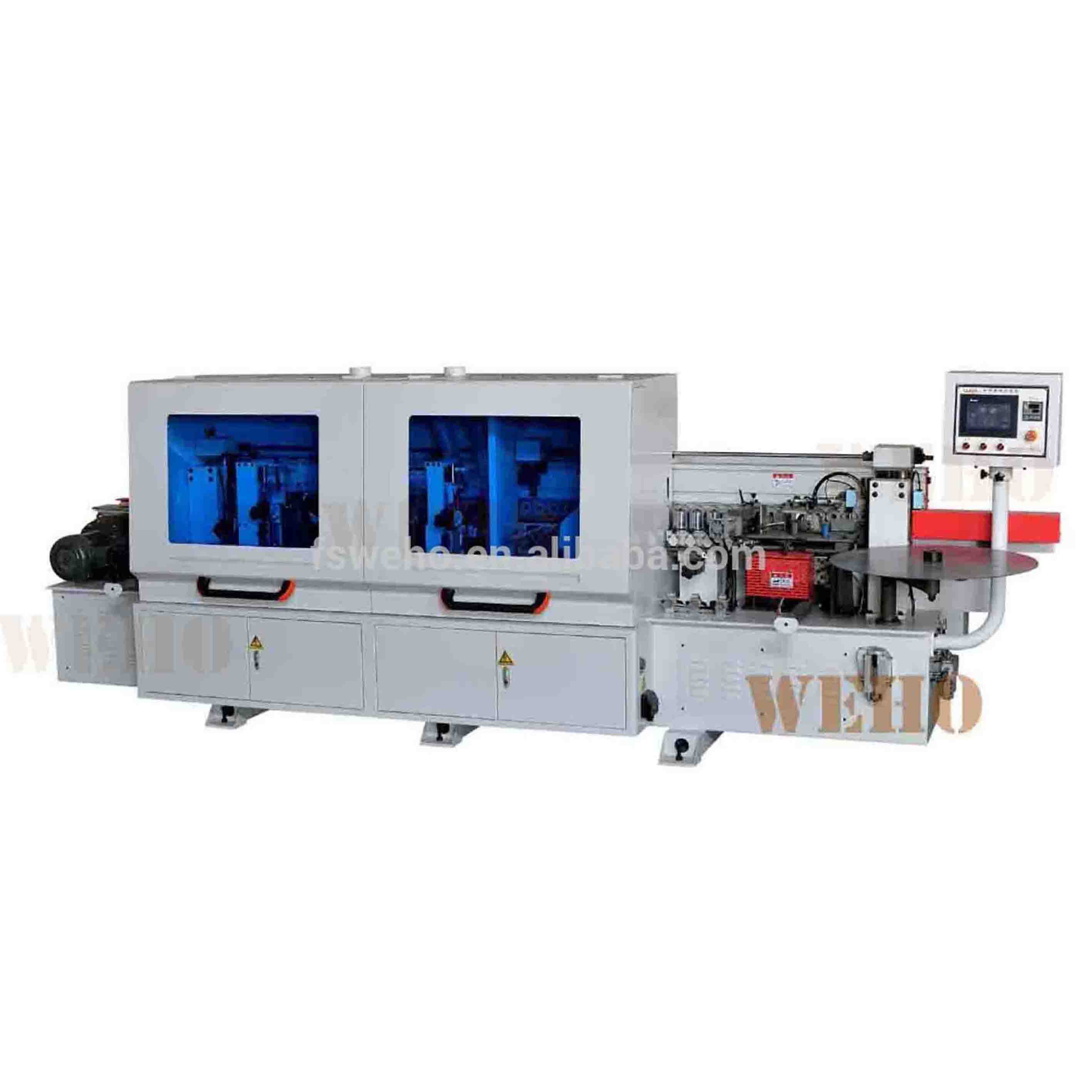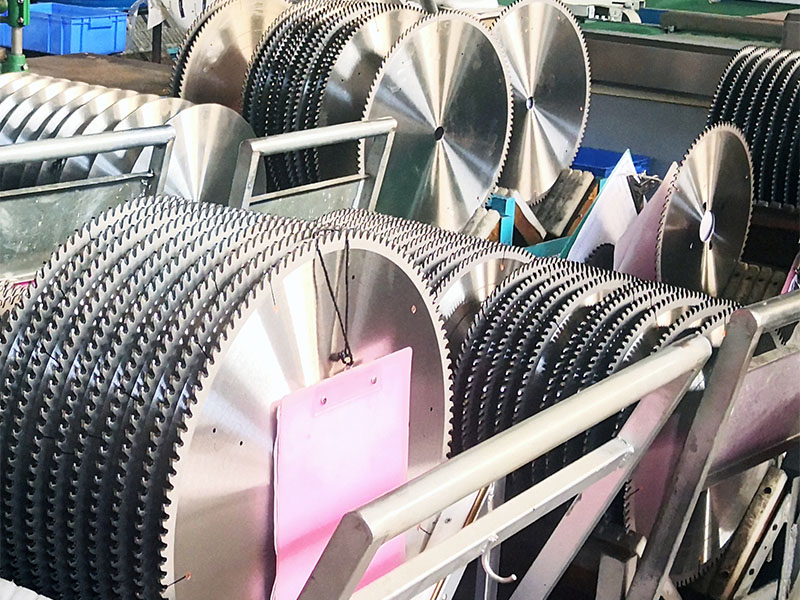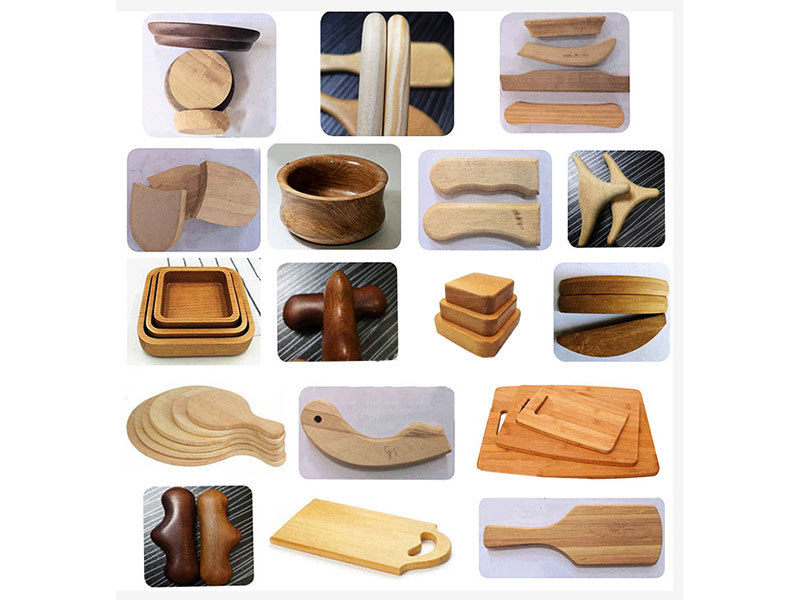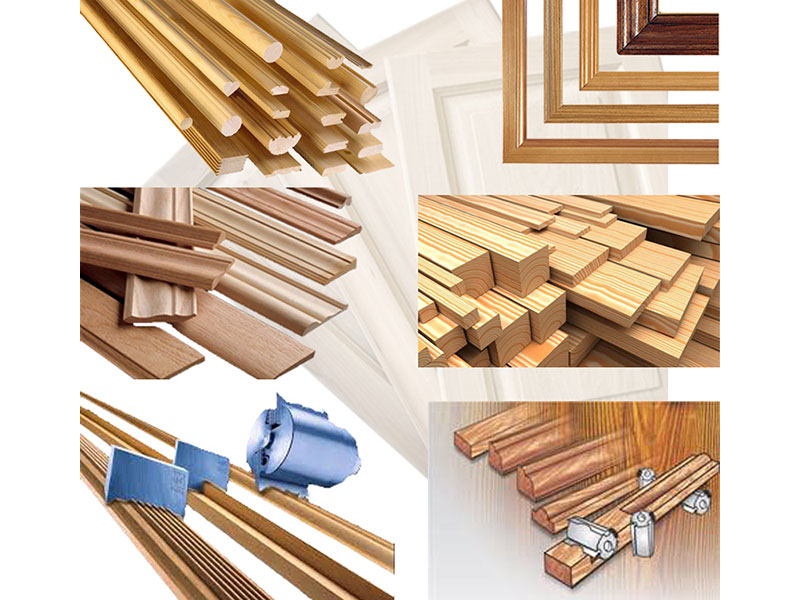
What Materials Can An Edge Banding Machine Use?
Edge banding is an essential process in modern furniture manufacturing, providing a clean, durable finish to the edges of wooden panels. An edge banding machine plays a critical role in this process by applying a thin strip of material to cover the exposed edges of boards or panels, enhancing their aesthetic appeal and protecting them from damage. Understanding the types of materials an edge banding machine can use is key to optimizing production and achieving the desired finish. This article explores the various materials that can be used with edge banding machines.
Introduction to Edge Banding Machines
Edge banding machines are used to apply edge bands to the exposed edges of panels made from materials like MDF (Medium Density Fiberboard), plywood, or particleboard. The process involves applying a strip of material to the edge of the panel using heat, pressure, or adhesive. The edge banding machine ensures a consistent and precise application, resulting in a smooth, professional finish.
Common Materials for Edge Banding
Edge banding materials come in various forms, each offering unique features and benefits. The most commonly used materials include PVC, ABS, wood veneer, melamine, polyester (PET), wood laminates, aluminum, and solid wood. These materials can be applied using both manual and automatic edge banding machines, depending on the production scale and complexity of the task.
PVC (Polyvinyl Chloride)
PVC is one of the most popular materials used in edge banding due to its affordability, versatility, and wide range of available finishes. PVC edge bands can be made in solid colors, wood grain patterns, or textured finishes, making it suitable for various furniture styles and applications.
PVC is a thermoplastic material, which means it can be easily applied and shaped using heat and pressure. It is a durable material that can withstand moderate wear and tear, making it a common choice for residential and commercial furniture. PVC edge banding is available in various thicknesses and can be applied with both manual and automatic edge banding machines.
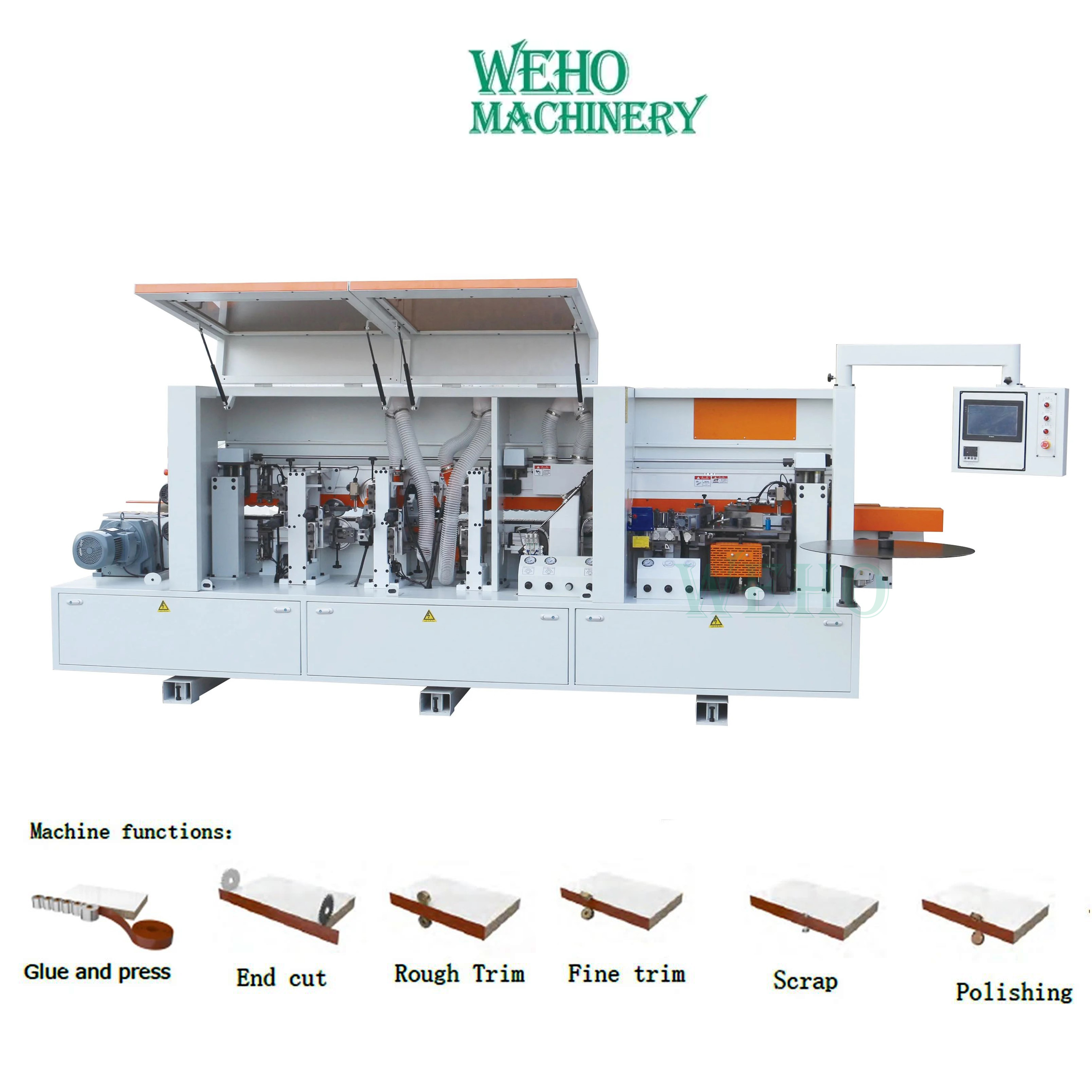
Automatic Edge Banding Machine
ABS (Acrylonitrile Butadiene Styrene)
ABS is another thermoplastic polymer used for edge banding. Known for its toughness and impact resistance, ABS is commonly chosen for applications where durability is essential. It is available in a variety of colors and finishes, including glossy and matte textures.
ABS offers excellent resistance to physical damage such as cracking and chipping, which makes it suitable for high-traffic areas or products subjected to rough handling. However, it tends to be more expensive than PVC, which may affect its cost-effectiveness in mass production.
Wood Veneer
Wood veneer edge banding is made from thin slices of real wood, offering a natural, high-quality finish. This material is often used for high-end furniture and cabinetry where the appearance of real wood is desired. Wood veneer can be applied to MDF, plywood, or particleboard panels to give the furniture an authentic wood look while maintaining cost efficiency.
Wood veneer is available in a wide variety of wood species, such as oak, maple, cherry, and walnut. It can be stained or finished to match the wood used for the rest of the furniture or cabinetry. While wood veneer offers a premium aesthetic, it is more prone to damage from moisture and physical wear compared to synthetic materials like PVC or ABS.
Melamine
Melamine edge banding is made from a resin-coated paper that is bonded to a substrate, such as MDF or particleboard. Melamine offers a smooth, durable finish that is resistant to staining, moisture, and heat. This material is available in a wide range of designs, including solid colors, wood grains, and custom patterns.
Melamine is commonly used in the production of budget-friendly furniture and cabinetry because it is relatively inexpensive and provides a durable, consistent finish. However, melamine can be more prone to chipping and wear over time, particularly along the edges.
Polyester (PET)
Polyester (PET) edge banding offers a glossy finish and is commonly used for high-end applications. PET edge bands are known for their excellent resistance to scratches, fading, and chemicals, making them ideal for environments where durability is essential. PET edge banding is also available in various colors and textures, and it is often used in modern furniture designs.
One of the key advantages of PET edge banding is that it is often made from recycled materials, making it a more environmentally friendly option compared to some other plastics. However, polyester is typically more expensive than PVC or melamine, which may limit its use in cost-sensitive projects.
Wood-Based Laminates (HPL, CPL)
High-pressure laminates (HPL) and continuous pressure laminates (CPL) are used as edge banding materials in applications where a premium finish is required. These laminates are made by compressing resin-soaked paper under heat and pressure, creating a highly durable, long-lasting material. HPL and CPL are often used in both commercial and residential furniture where a high-end look and performance are needed.
Wood-based laminates are available in a variety of finishes, including wood grain, solid colors, and metallic designs. They offer excellent resistance to wear, moisture, and scratches, making them ideal for heavy-use environments such as kitchens and office furniture. However, like wood veneer, they are more difficult to apply than synthetic materials and may require specialized edge banding equipment.
Aluminum
Aluminum edge banding is typically used in modern and industrial furniture designs where a metallic finish is desired. Aluminum offers a sleek, contemporary look and is highly resistant to corrosion, rust, and physical wear. Aluminum edge bands can be used to complement metal or high-tech furniture designs, providing both aesthetic appeal and durability.
While aluminum edge banding is highly durable, it can be more expensive than other materials and may require specialized equipment for application. It is typically used in premium projects or where the design calls for a metallic edge.
Solid Wood
Solid wood edge banding is made from thin strips of real wood that are applied to the edges of plywood, MDF, or particleboard panels. This material provides a natural, high-quality finish that is often used in luxury furniture and cabinetry. Solid wood edge banding is ideal for matching the overall design of solid wood furniture or when a traditional aesthetic is desired.
While solid wood edge banding offers a premium finish, it can be more expensive and difficult to work with compared to synthetic options. Wood is also susceptible to environmental factors such as moisture and temperature changes, which can cause the material to expand or contract.
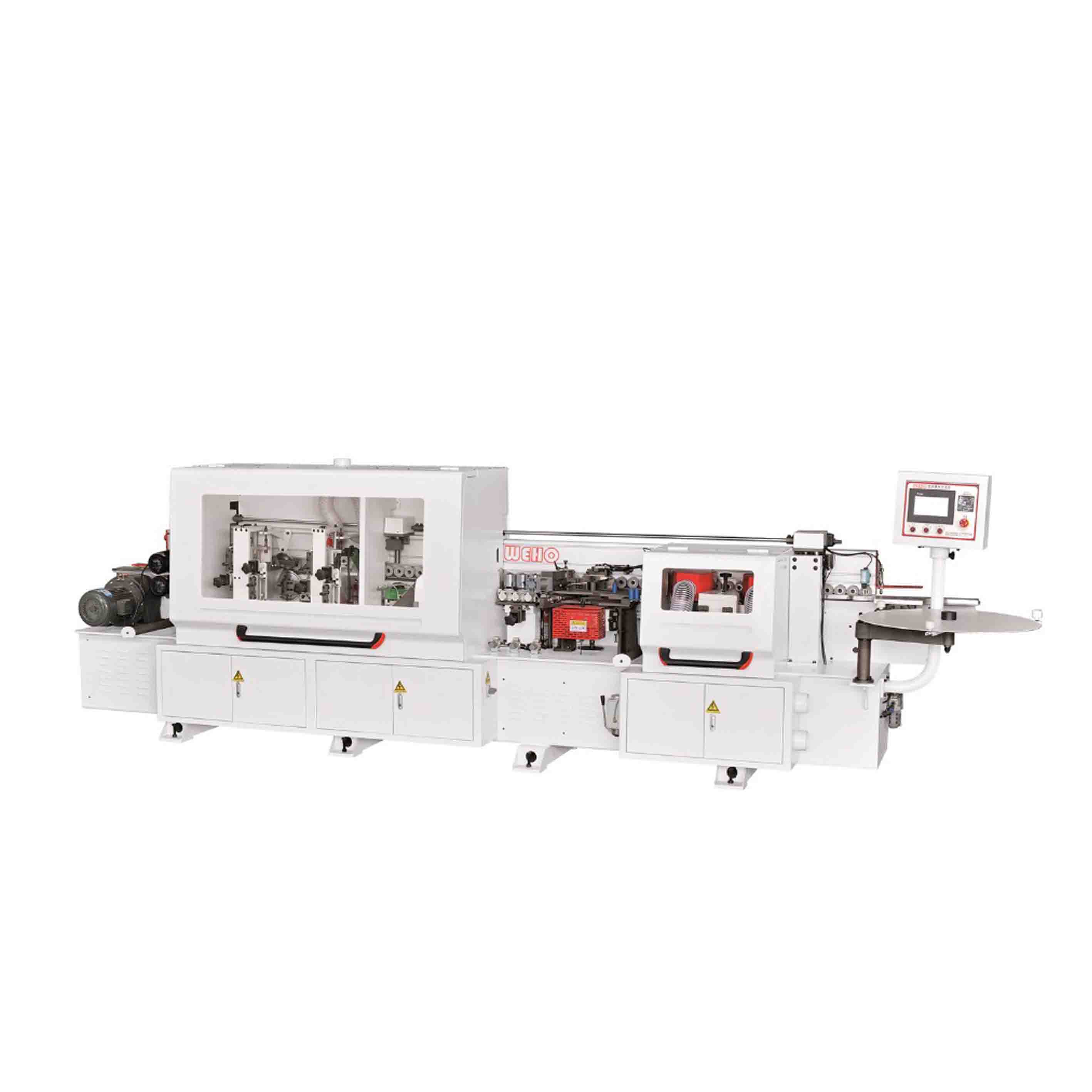
Through Feed Edge Banding Machine
Choosing the Right Material for Your Edge Banding Machine
The selection of the right edge banding material depends on several factors, including the type of furniture being produced, the production volume, and the desired finish. Here are some key considerations when choosing an edge banding material:
Budget: Materials like PVC and melamine are more affordable, making them suitable for mass production or budget-conscious projects. For high-end applications, materials like wood veneer, solid wood, and aluminum offer premium finishes but come at a higher cost.
Durability: If the product will be exposed to heavy use or harsh conditions, materials like ABS, polyester, or HPL may be preferable due to their superior resistance to wear and damage.
Aesthetic Appeal: For projects requiring a natural wood look, wood veneer and solid wood edge banding provide a genuine wood finish. If a modern or industrial look is desired, materials like aluminum or polyester can achieve the desired effect.
Production Volume: For small-scale or custom production, materials like wood veneer or solid wood may be ideal. For large-scale production, synthetic materials like PVC, ABS, or melamine can help streamline the manufacturing process and reduce costs.
Machine Compatibility: Not all edge banding machines are capable of handling all types of materials. It’s important to ensure that the machine can accommodate the material in terms of thickness, adhesive requirements, and application methods.
Conclusion
Edge banding machines are essential tools in the production of furniture and cabinetry, enabling manufacturers to apply a range of materials to the edges of panels and create finished products with a clean, professional appearance. The choice of material for edge banding plays a significant role in the final look, durability, and cost of the product. Whether using PVC, ABS, wood veneer, or more specialized materials like aluminum, it’s important to choose the material that best suits the project’s requirements, taking into account factors such as budget, durability, aesthetics, and machine compatibility. By understanding the materials available for edge banding, manufacturers can ensure a high-quality result that meets both functional and visual expectations.


